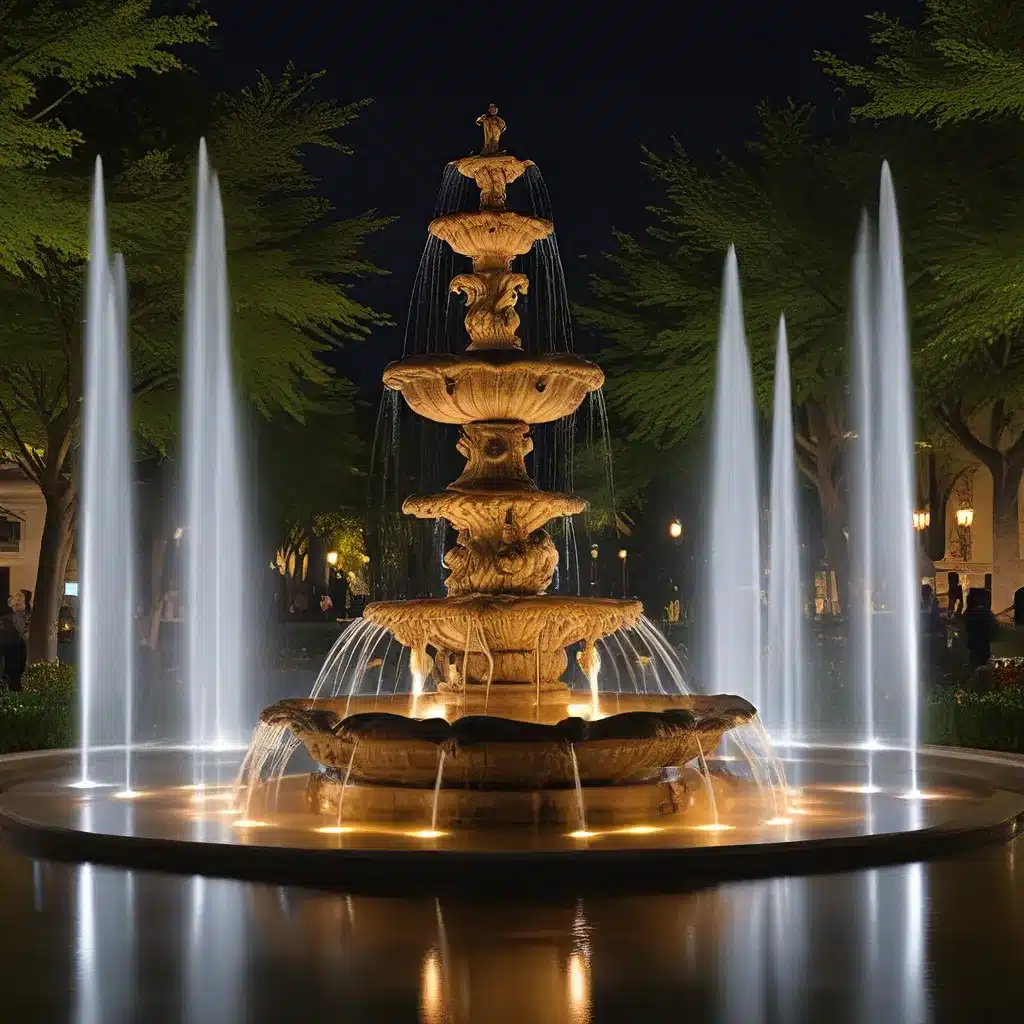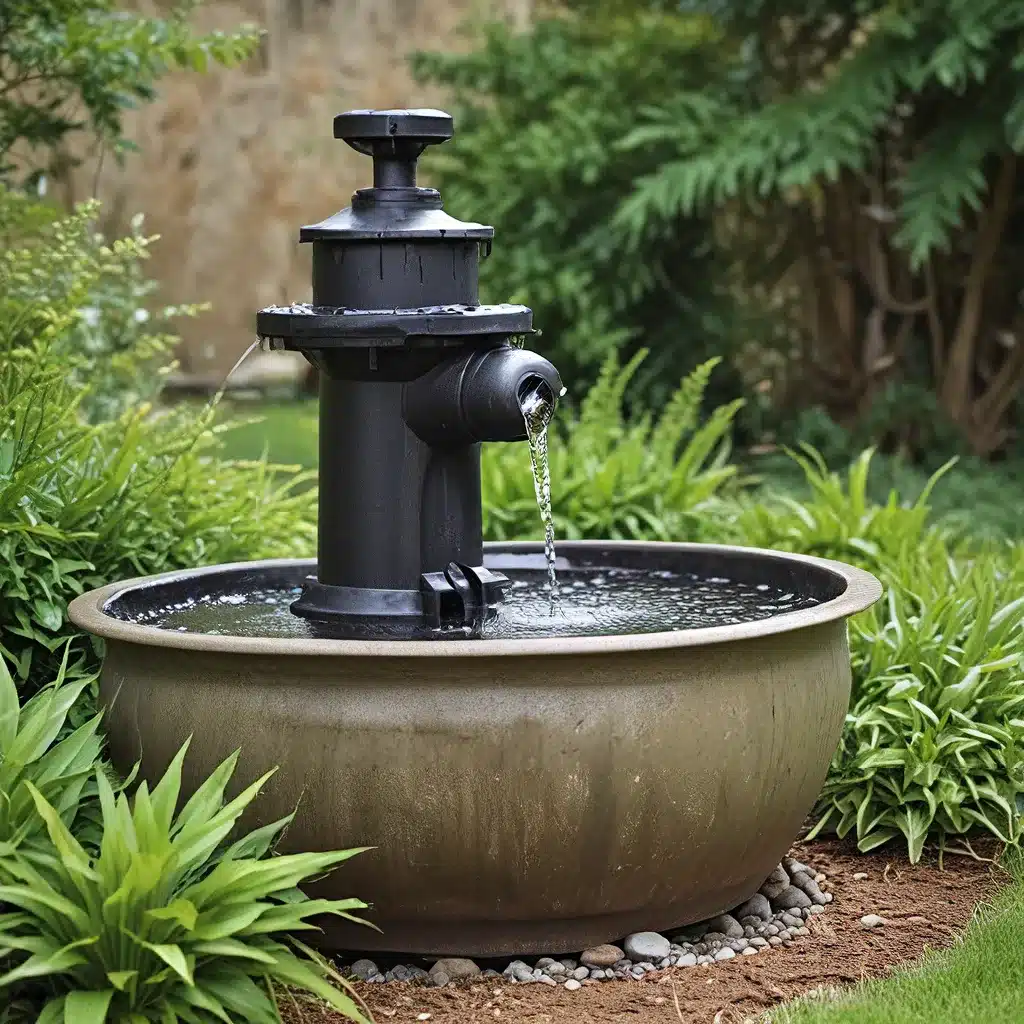
Fountain Design Essentials – Welcome to Fountain Lights
Fountain Design Essentials – Welcome to Fountain Lights

As someone who’s been tinkering with fountain setups for years, I can tell you that finding the perfect pump is crucial. It’s like the heart of the whole system – get it wrong, and your fountain will be nothing more than a lifeless puddle. But nail the pump selection, and you’ll have a captivating water display that leaves your neighbors green with envy.
Now, I know what you’re thinking – “How hard can it be to pick a pump? Just grab the biggest one and call it a day, right?” Wrong. Fountain pumps come in all shapes, sizes, and power levels, and choosing the wrong one can lead to all sorts of problems. Believe me, I’ve been there, done that, and ended up with a waterlogged backyard more times than I care to admit.
But fear not, my friends! In this comprehensive guide, I’ll walk you through the key factors to consider when selecting a fountain pump, so you can make an informed decision and end up with a setup that’s nothing short of perfection.
Before you even start browsing pumps, it’s essential to take a close look at your fountain and understand its specific requirements. After all, not all fountains are created equal, and what works for your neighbor’s mini-oasis might not be the right fit for your grand, multi-tiered masterpiece.
One of the most important factors to consider is the size of your fountain. As a general rule of thumb, the pump’s flow rate should be about 25-50% of the fountain’s total water volume. So, if your fountain holds 100 gallons, you’ll want a pump that can move between 25 and 50 gallons per minute (GPM).
But it’s not just the overall size that matters – you also need to factor in the height of your fountain. The taller the structure, the more powerful the pump needs to be to push the water up and create that mesmerizing cascade effect. As a rough guide, you’ll want to add about 1 GPM of flow for every foot of fountain height. So, if your fountain stands 5 feet tall, you’d be looking for a pump with at least 5 GPM of flow.
But wait, there’s more! You also need to consider the number and type of water features in your fountain. Are you going for a simple single-tier design, or a more elaborate multi-level setup with multiple spouts and spray patterns? The more complex the fountain, the more powerful the pump will need to be to keep everything flowing seamlessly.
Alright, now that you’ve got a good handle on your fountain’s needs, it’s time to start shopping for pumps. But be warned – the world of fountain pumps is a veritable minefield of technical jargon and confusing specifications. Fear not, though, because I’m here to break it all down for you.
First and foremost, let’s talk about flow rate. As I mentioned earlier, this is the measure of how much water the pump can move per minute, and it’s typically expressed in gallons per minute (GPM). The right flow rate is crucial for ensuring your fountain looks its absolute best, so be sure to select a pump that can handle the volume of your water feature.
But flow rate isn’t the only thing you need to consider. You also need to think about pump head, which is the maximum height the pump can push the water. This is particularly important for taller fountains, as you’ll need a pump with enough power to send the water up and over the top.
And let’s not forget about pump voltage. Most fountain pumps run on either 12V or 120V power, so make sure you choose one that’s compatible with your outdoor electrical setup. Trust me, you don’t want to find out the hard way that your new pump doesn’t play nice with your existing wiring.
Oh, and one more thing – noise level. Some pumps can be real chatterboxes, which can ruin the serene ambiance you’re trying to create. Look for pumps that are designed to be quiet and energy-efficient, and you’ll be able to enjoy the soothing sounds of your fountain without feeling like you’re living next to a construction site.
Alright, now that you’ve got a solid understanding of the key factors to consider, it’s time to put it all together and find the perfect pump for your fountain. But before you start clicking “add to cart,” there’s one more crucial step: double-checking your measurements and calculations.
I can’t tell you how many times I’ve seen people get so excited about a pump that they forget to verify that it actually meets their fountain’s needs. Measure twice, buy once – that’s my motto when it comes to fountain pumps.
Once you’re confident you’ve found the right pump, it’s time to make the purchase and get that bad boy installed. And let me tell you, there’s nothing quite like the feeling of firing up your fountain for the first time and watching as the water comes to life, dancing and sparkling in the sunlight.
But the journey doesn’t end there, my friends. Proper maintenance is key to keeping your fountain pump in tip-top shape for years to come. Be sure to clean the filter regularly, and keep an eye out for any signs of wear and tear. With a little TLC, your pump will keep powering your fountain’s mesmerizing displays for seasons to come.
So there you have it – the inside scoop on selecting the perfect fountain pump. Remember, it’s not just about finding the biggest and baddest one on the market. It’s about understanding your fountain’s unique needs and finding the pump that’s the perfect fit. Trust me, when you get it right, the results will be nothing short of magical.
Happy fountain building, my fellow water feature enthusiasts!
Share to :
Subscribe to our newsletter for the latest in fountain design, innovative lighting ideas, and exclusive tips straight to your inbox. Join the community shaping the future of water features.

Rapid delivery to your doorstep.

Excellence in every product.

Great value for your investment.

Assistance at any hour.
Fountain Lights — Illuminating creativity in every splash!
Copyright © 2023. All Right Reserved